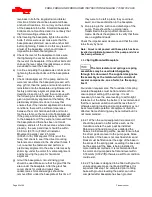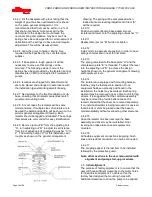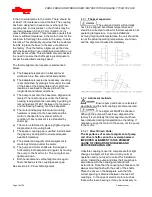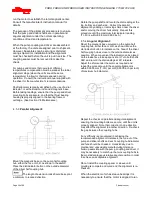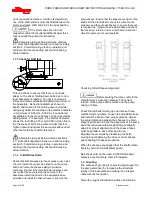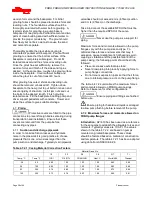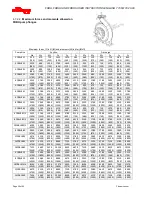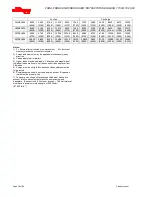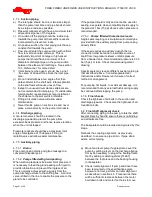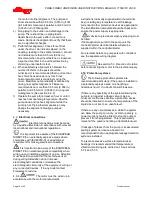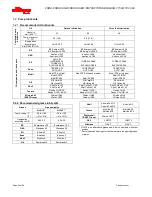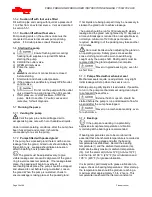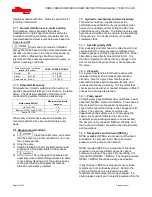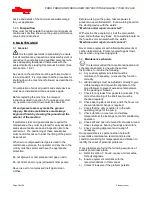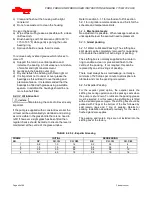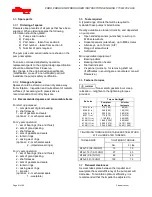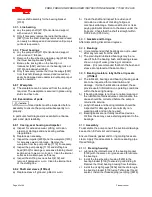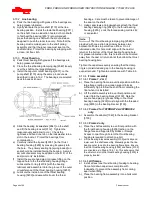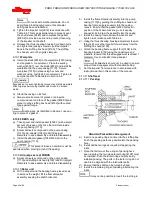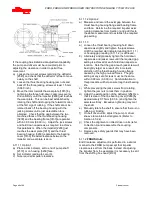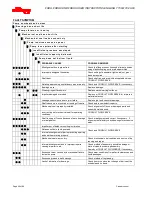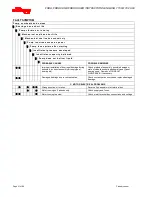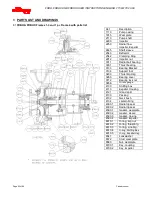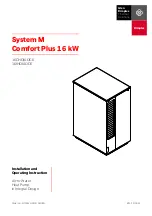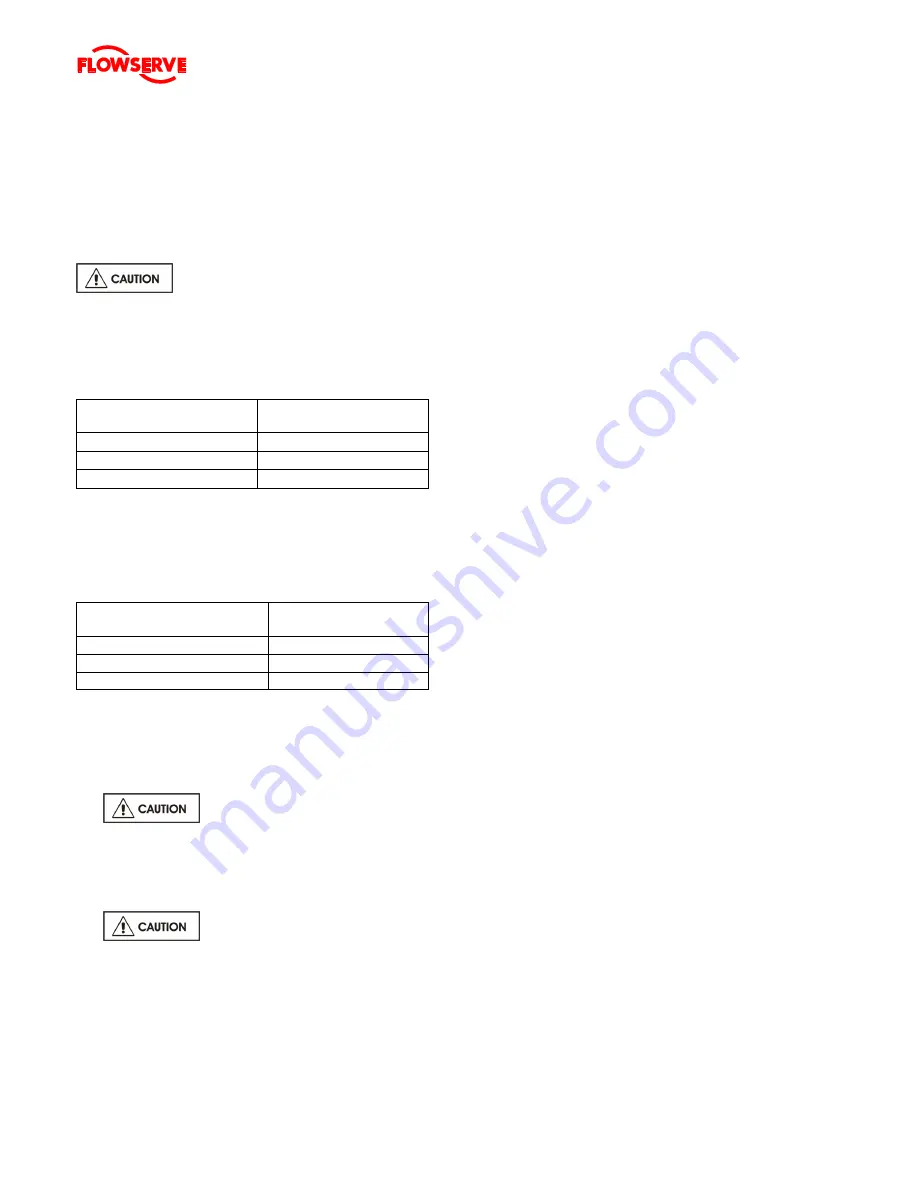
FRBH, FRBHX AND FRBHS USER INSTRUCTIONS ENGLISH 71569178 20-08
Page 37 of 60
Flowserve.com
®
marginally reduce with time. Refer to section 6.2.3.1
for further information.
5.7.5
Normal vibration levels, alarm and trip
For guidance, pumps generally fall under a
classification for rigid support machines within the
International rotating machinery standards and the
recommended maximum levels below are based on
those standards.
Alarm and trip values for installed
pumps should be based on the actual measurements
(N) taken on the pump in the fully commissioned as
new condition. Measuring vibration at regular
intervals will then show any deterioration in pump or
system operating conditions.
Vibration velocity
–
unfiltered
mm/s (in./s) r.m.s.
FRBH, FRBHX & FRBHS
Normal
N
5.6 (0.22)
Alarm
N
x 1.25
7.1 (0.28)
Shutdown trip
N
x 2.0
11.2 (0.44)
5.7.6
Stop/start frequency
Pump sets are normally suitable for the number of
equally spaced stop/starts per hour shown in the table
below. Check actual capability of the driver and
control/starting system before commissioning.
Motor rating kW (hp)
Maximum stop/starts
per hour
Up to 15 (20)
15
Between 15 (20) and 90 (120)
10
Above 90 (120)
6
Where duty and standby pumps are installed it is
recommended that they are run alternately every
week.
5.8 Stopping and shutdown
a)
Close the outlet valve, but ensure
that the pump runs in this condition for no more
than a few seconds.
b)
Stop the pump.
c)
Switch off flushing and/or cooling/heating liquid
supplies at a time appropriate to the process.
d)
For prolonged shut
-
downs and
especially when ambient temperatures are likely
to drop below freezing point, the pump and any
cooling and flushing arrangements must be
drained or otherwise protected.
5.9
Hydraulic, mechanical and electrical duty
This product has been supplied to meet the
performance specifications of your purchase order,
however it is understood that during the life of the
product these may change. The following notes may
help the user decide how to evaluate the implications
of any change. If in doubt contact your nearest
Flowserve office.
5.9.1
Specific gravity (SG)
Pump capacity and total head in metres (feet) do not
change with SG, however pressure displayed on a
pressure gauge is directly proportional to SG. Power
absorbed is also directly proportional to SG. It is
therefore important to check that any change in SG
will not overload the pump driver or over-pressurize
the pump.
5.9.2
Viscosity
For a given flow rate the total head reduces with
increased viscosity and increases with reduced
viscosity. Also for a given flow rate the power
absorbed increases with increased viscosity, and
reduces with reduced viscosity. It is important that
checks are made with your nearest Flowserve office if
changes in viscosity are planned.
5.9.3
Pump speed
Changing pump speed effects flow, total head, power
absorbed, NPSH
R
, noise and vibration. Flow varies in
direct proportion to pump speed, head varies as
speed ratio squared and power varies as speed ratio
cubed. The new duty, however, will also be
dependent on the system curve. If increasing the
speed, it is important therefore to ensure the
maximum pump working pressure is not exceeded,
the driver is not overloaded, NPSH
A
> NPSH
R
, and
that noise and vibration are within local requirements
and regulations.
5.9.4
Net positive suction head (NPSH
A
)
NPSH available (NPSH
A
) is a measure of the head
available in the pumped liquid, above its vapour
pressure, at the pump suction branch.
NPSH required (NPSH
R
) is a measure of the head
required in the pumped liquid, above its vapour
pressure, to prevent the pump from cavitating. It is
important that NPSH
A
> NPSH
R
. The margin between
NPSH
A
> NPSH
R
should be as large as possible.
If any change in NPSH
A
is proposed, ensure these
margins are not significantly eroded. Refer to the
pump performance curve to determine exact
requirements particularly if flow has changed. If in
doubt please consult your nearest Flowserve office for

